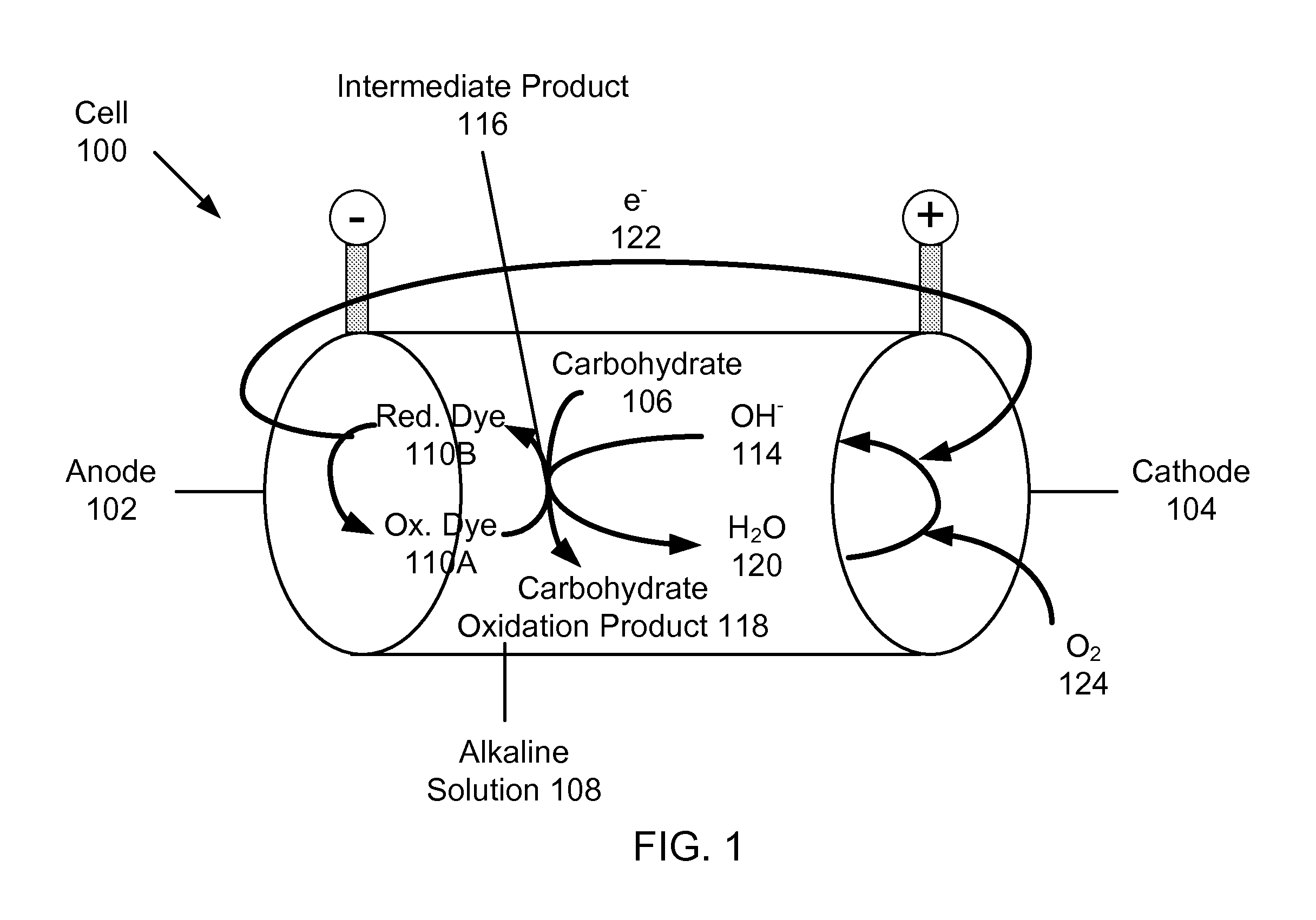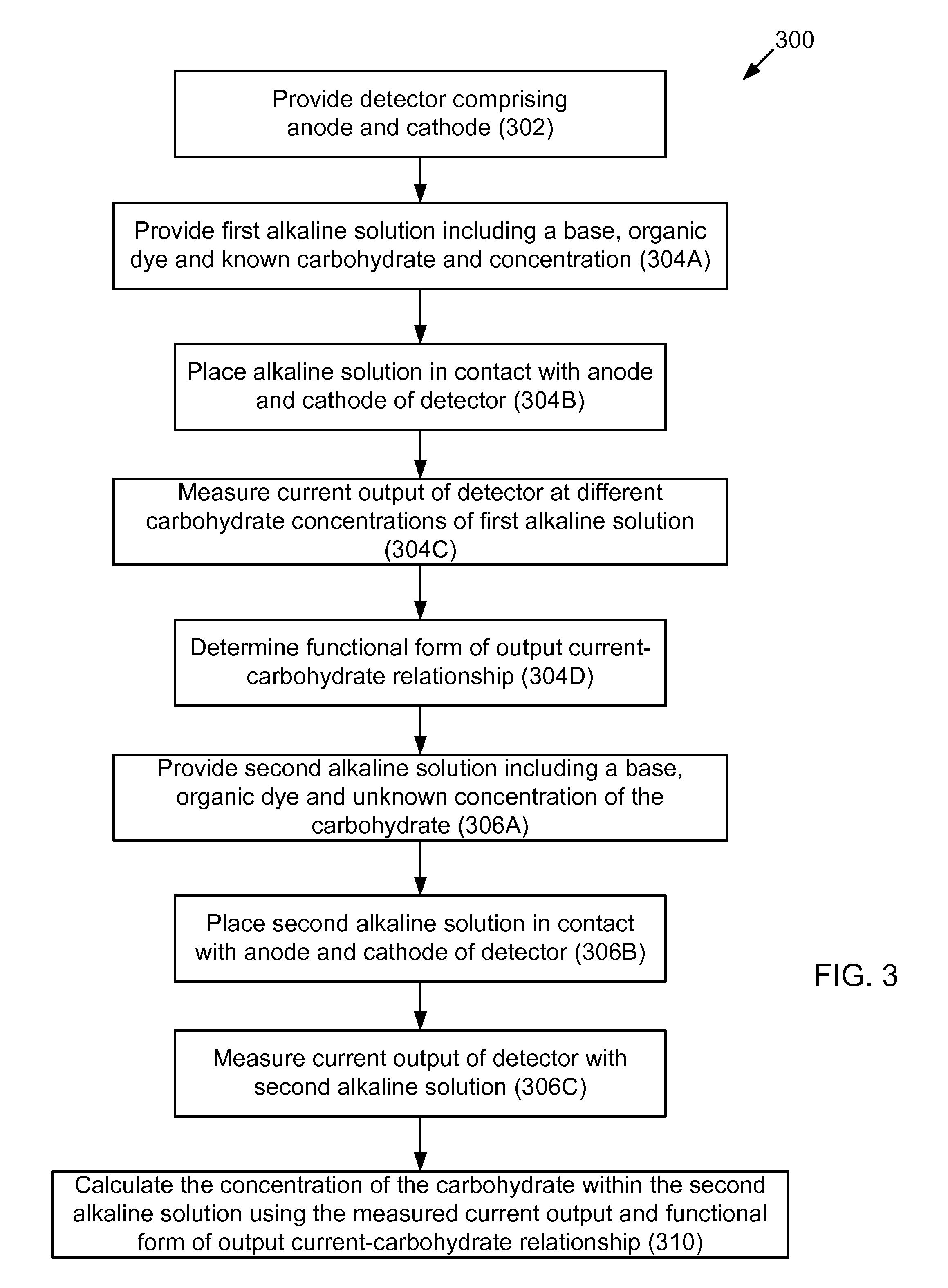Systems and methods for carbohydrate detection
a detection system and carbohydrate technology, applied in the field of sensors of carbohydrates, can solve the problems of low stability of gox-based detectors, short life of previous non-enzymatic approaches, and interference from chlorides in gox-based detectors
- Summary
- Abstract
- Description
- Claims
- Application Information
AI Technical Summary
Benefits of technology
Problems solved by technology
Method used
Image
Examples
example 1
Carbohydrate Detector Having Varied Glucose, Methyl Viologen, and KOH Concentrations
Three experiments were conducted in Example 1 to examine the effects of varying glucose concentration, methyl viologen concentration, and KOH concentration on the performance of the detector. The triangles represent the detector voltage and the circles represent power density. In each case, the baseline concentration for the three constituent reagents maintained the ratio of glucose: methyl viologen: KOH at about 2 M: about 28 mM: about 3 M, respectively. The concentration of glucose was varied within the range of about 60 mM to about 500 mM, the concentration of methyl viologen was varied within the range of about 1 mM to about 4 mM, and the concentration of KOH was varied within the range of about 0.25 M to about 1 M. Substantially no stirring or agitation of the solution was applied to the detector during power production.
FIGS. 4A-4C illustrate polarization curves (steady state detector voltage ve...
example 2
Dependence of Current Generation on Glucose, MV, and KOH Concentrations
experiment 2
explored the influence of reagent concentration on the limiting current of the detector. FIGS. 5A-5C illustrate experimental results for limiting current as a function of glucose concentration (FIG. 5A), MV concentration (FIG. 5B), and KOH concentration (FIG. 5C). In each case, the concentration for the non-varying constituent reagents was: glucose about 1 M, methyl viologen about 10 mM, and KOH about 3M. Glucose concentration is observed to vary linearly with the glucose concentration, as shown in FIG. 5A. In contrast, MV and KOH concentrations follow a second order dependence with MV.
Other dye mediators may also be employed in the detector. Embodiments of such dyes may include, but are not limited to, Meldola's blue (MB), methylene blue, methylene green, indigo carmine, and safranin O. FIG. 6 illustrates the relationship between glucose concentration and current density using indigo carmine as the organic mediator dye. This experiment further included a base different from that of...
PUM
| Property | Measurement | Unit |
|---|---|---|
| temperature | aaaaa | aaaaa |
| atmospheric pressure | aaaaa | aaaaa |
| atmospheric pressure | aaaaa | aaaaa |
Abstract
Description
Claims
Application Information
 Login to View More
Login to View More - R&D
- Intellectual Property
- Life Sciences
- Materials
- Tech Scout
- Unparalleled Data Quality
- Higher Quality Content
- 60% Fewer Hallucinations
Browse by: Latest US Patents, China's latest patents, Technical Efficacy Thesaurus, Application Domain, Technology Topic, Popular Technical Reports.
© 2025 PatSnap. All rights reserved.Legal|Privacy policy|Modern Slavery Act Transparency Statement|Sitemap|About US| Contact US: help@patsnap.com



